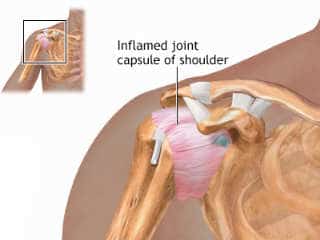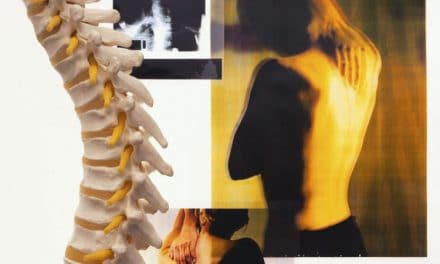Symptoms of Frozen Shoulder (Adhesive Capsulitis)
- pain in the shoulder
- loss of motion in the shoulder, inability to raise arms
- stiffness
What is Frozen Shoulder?
What Causes Frozen Shoulder?
Factors of Frozen Shoulder

- shoulder injury or surgery
- often in people 40 – 70 years old
- more often in postmenopausal women
- often in people with chronic diseases
- cervical disk (neck) subluxations or disease
- hyperthyroidism
- diabetes
- open heart surgery
Your chiropractor will examine the shoulder and your spine and may order x-rays and/or MRIs to see if arthritis or other issues are a factor. If the diagnosis is frozen shoulder, daily intense physical therapy.
Is Adhesive Capsulitis Correction Painful?
Even though most chiropractic adjustments are not typically painful. Some of the frozen shoulder adjustments may be painful. However, adjustments for frozen shoulder will give the greatest amount of correction in the first visit. A short and sharp increase in pain may be felt directly after the adjustment, but the pain will calm down in a few minutes. After the pain subsides, the chiropractor will again test the range of motion, which can improve as much as 50% or more after the first visit with certain chiropractors. Typically, the pain will be less severe than before the adjustment. The chiropractor will then recommended some exercises.
Every subsequent adjustment for the frozen shoulder will show improvements in the range of motion, but these improvements will be less than after the first adjustment. Patients feel the greatest discomfort and pain when their range of motion is at 90 degrees or less. When the range of motion is greater than at 90 degrees, the pain is typically less.
Chiropractic for Adhesive Capsulitis
Some chiropractors only adjust the spine, and sometimes only one area of the spine to restore proper nerve function by correcting joint position and function. It is possible that a patient with a frozen shoulder will respond to this form of chiropractic care. If you want a more direct approach though, you might consider seeing a chiropractor who does extremity adjusting.
If the amount of pain that you will need to endure for a correction is a big concern for you, then consider trying a chiropractor who will use an instrument adjusting technique or a low mass light adjusting technique. Instrument adjusting in most cases will not be as painful, but the results may take longer.
Extremity Adjusting Chiropractor Referral
There are many different chiropractic techniques which all have their own merits. In some cases, your chiropractor may refer you to another chiropractor practicing a different technique if he or she feels that it may be beneficial. Maybe you’ve always had great results from your current chiropractor but they do not do any extremity adjusting. In that case, asking for a referral to another chiropractor who does extremity adjust might be something to consider. Often even one successful shoulder adjustment will remover the primary adhesion and you can then return to your original chiropractor.
Chiropractors that can improve frozen shoulders offer patients a natural way to help the body heal itself. Patients have said they can now brush their teeth and shampoo their hair again. Patients regain the gift of motion in their shoulders that many of us take for granted.
For Chiropractors
Chiropractors may want to offer their patients a shoulder roller for home therapy to help further increase the range of motion after the initial adjustment and release of the adhesion.
For chiropractors wanting to add a post adjustment in office therapy, or looking for a good way to provide patients assisted passive-range of motion for adhesive capsulitis and other shoulder mobility conditions—consider the following device and its optional mounting options as a way to help patients continue increasing their range of motion after their adjustments.
The Activator V Ideal Instrument for Extremity Adjusting
I’m a biologist and health writer. I’m able to draw on my technical, science, business and journalism backgrounds when researching and creating content. I’ve managed a chiropractic office where I handled; HR, inventory control, and counseling, in addition to doing the patient education. I’m an experienced public speaker and I’ve helped built large communities of people interested in health and plant-based diets. My laboratory work includes genetic analysis and I also do the grant writing and administration, online fundraising and social media. In the past I was the team manager for invasive species field operations. I’m also a regular volunteer for international coastal cleanup.




